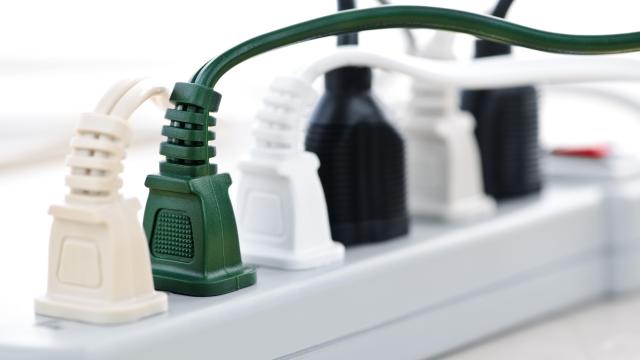With the exception of your bathroom, you probably have multiple appliances, devices, lighting, and electronics is most rooms in your home — all of which need to be plugged in. Plus, there are things like vacuums, fans, and other items that may not get their own dedicated outlet, but need one on occasion.
And unless your home is newly built or renovated, chances are, there aren’t a sufficient number of electrical outlets to power everything you use on a daily basis. To help make up for that, you may have power boards or surge protectors that can accommodate additional plugs. But which is which?
Although they look the same, and the terms are often used interchangeably, power strips and surge protectors are not the same thing. Here’s what to know.
The difference between power boards and surge protectors
Both power boards and surge protectors consist of an extension cord (of varying length) with multiple outlets, so it’s easy to see where things can get confusing.
The difference is that surge protectors have another element that ensures that any electronics plugged into it won’t be damaged in the event of a power surge (which is when extra power comes into your home). Power boards may have an on/off switch, but don’t offer much (if any) more protection than a wall outlet.
According to the experts at Underwriters Laboratories (UL), a surge protector will “clamp” the surge — meaning it will take the surge away from what’s downstream (i.e. plugged into its outlets). Surge protectors are especially important if you live in a rural area, a building with a lot of large motors (like a big furnace or an elevator), or an area that gets a lot of electrical storms — all of which can send surges down the power line.
The bottom line: Pay attention to the packaging when purchasing a power board or surge protector to ensure you’re buying the product you want.

Leave a Reply
You must be logged in to post a comment.